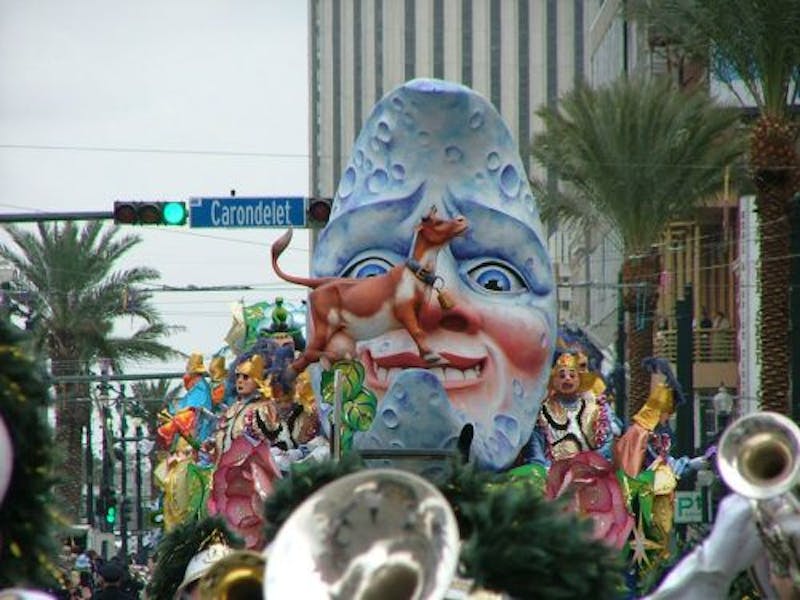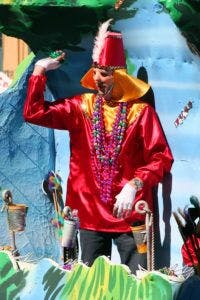Get a Free Consultation
2 minute response
24 hours a day, 7 Days a Week
Dedicated Trust Guss Intake Team

Here at Trust Guss Injury Lawyers, we are ALL ABOUT letting “les bons temps rouler” every year come Fat Tuesday. As much as we love the parades and parties in our city, we have also seen what can happen when residents and visitors to The Big Easy have dangerous and even life-threatening accidents and incidents on Bourbon Street and beyond during Carnival. From collisions between cars and pedestrians to slips and falls, there is no end to the ways would-be merrymakers can instead come away from the revelry suffering from severe injuries or worse. To learn more about your legal rights after getting injured in our fair city during Mardi Gras, contact an experienced New Orleans personal injury attorney. Meanwhile, if you plan on visiting New Orleans for Mardi Gras (or any of our city’s other great celebrations, like the French Quarter Festival or the Jazz and Heritage Festival), here are some tips to have a safe and memorable time.
Okay, for starters, here’s the GOOD news: Mardi Gras in New Orleans is a veritable PARADISE for pedestrians. A walking wonderment, if you will. Parade routes are closed to vehicles as the revelers roll through, and the entire French Quarter has limited car traffic during the high celebration times. So, what’s the BAD news, you say? Well, I’ve got news for you. As a pedestrian in the Big Easy during Carnival, you must BE CAREFUL. Even with street closures, dangers lurk at every crosswalk.
Just because personal driving options get SEVERELY limited in the Quarter during Mardi Gras doesn’t mean vehicles stop operating completely. In fact, the city leans heavily on public transportation during Carnival to give residents and visitors added options for getting around. The New Orleans Regional Transportation Authority operates buses and streetcars on modified schedules and routes during Mardi Gras. Check their website for details on this year’s arrangements. When riding a bus or streetcar, or crossing streets with bus lanes or streetcar tracks, follow some basic safety rules to avoid getting hurt, such as:
One byproduct of the traffic restrictions along parade routes is that traffic tends to tie up on the roads that remain open. Now, DON’T GET ME WRONG, we pride ourselves on our hospitality and easygoing spirit here in NOLA. We are, nevertheless, all human, and no one particularly enjoys sitting in a traffic jam. Some Crescent City drivers get frustrated, rageful even, and make terribly poor driving decisions, which can put pedestrians at particular risk. So, if you happen to find yourself wanting to cross a street that stays open to traffic during Carnival, kindly use the crosswalks. It is a courtesy to those most unfortunate drivers who cannot join you in your merriment, and it will keep you safe from an unintended, but potentially deadly, collision with a car or truck.
Let me also hasten to remind you that though Mardi Gras is best enjoyed on foot, and New Orleans does its best to welcome and accommodate revelers with open arms and hearts, the Crescent City’s streets are not a kingdom to call your own. To keep you supplied with the food and drink and throws and joy that you expect during Carnival, New Orleans musicians, restauranteurs, barkeeps, and other workers need to get around without putting themselves and others at risk. So please, feel free to dance and sing in the middle of the street when circumstances allow—and trust me, you will know exactly when that is—but stick to the sidewalk, neutral ground, and park areas whenever traffic, and not a parade, goes rolling by. For Heaven’s sake, DO NOT RUN OUT IN FRONT OF A PARADE FLOAT OR TRY TO REACH UNDER A FLOAT FOR BEADS. Floats have even less ability to come to a quick stop than streetcars.
Anyone who has experienced Carnival knows that the action happens outside and inside. Balls, feasts, and long nights of dancing to live music make up as much a part of the essential Mardi Gras tradition as any second line or float. To stay SAFE AND SOUND during the Fat Tuesday festival, follow these tips when you head indoors.
Though much of New Orleans sits right around (or below!) sea level, many Mardi Gras celebrations and get-togethers happen upstairs. Balconies in the French Quarter practically overflow with merrymakers watching the parades trundle past. Balls and banquets, small and large, happen on the upper floors of historic buildings around town. To access and stay safe in these upstairs spaces, I implore you: HOLD ON TIGHT to railings and banisters. When you combine crowds, balconies, stairways, and inebriation, it is ALL TOO EASY IN THE BIG EASY to take a nasty tumble if you lose your footing. Please, do not lean too far out over a balcony railing to catch a throw. More will fly within arms-reach soon enough. Likewise, please do not push your way up or down a narrow flight of steps. The party is not going anywhere, my friend. Take your time, enjoy, and only let go of a handhold when you have your feet well and under you.
One of the most wonderful parts of Mardi Gras is walking into an establishment and finding unexpectedly amazing music and celebration. This is why you should always have faith that if someone turns you away from one venue because it is bursting to the seams, you will find another equally enjoyable option soon enough. In contrast, there is nothing particularly fun or safe about squeezing too many people into a small space. Crowds packed into a tiny venue like so many sardines can turn DEADLY in the blink of an eye if a fire or fight breaks out. If a restaurant or dance floor seems too tight for comfort, go somewhere else. New Orleans wants your Mardi Gras to feel ecstatic and liberating, not claustrophobic and frightening.
With so many crowded spaces, indoors and out, it’s easy not to notice small changes underfoot. Take your time getting from place to place. Watch that you don’t get caught off guard and fall down when you’re on stairs. If it is raining, floors get slippery. Plus, on occasion we all tend to enjoy our celebrating a bit too much; so, if possible, have a friend to lean on for balance and companionship wherever you go.
I would be remiss if I did not also provide some tips for keeping yourself safe from those who would use Carnival as an opportunity to do you wrong. New Orleans tries very hard to keep treachery and mayhem to a minimum during Mardi Gras, but our brave law enforcement officers cannot be everywhere at once. They rely on you to make good decisions about your personal safety. Here are some suggestions to help you out:
Mardi Gras is loud, boisterous, and a tad debauched, just as Bacchus likes it. Like any truly extravagant celebration, it is best enjoyed with your friends and loved ones. No doubt you will meet a friendly stranger or two (or two hundred) along the way, but to stay safe, avoid going off alone with anyone you don’t know. That is the sort of common sense advice most people don’t feel like they need, but I repeat it here because an infectious spirit to Mardi Gras lowers one’s guard and, sometimes, one’s inhibitions. What might seem downright foolish elsewhere could seem perfectly au courant in the midst of a sumptuous (or delirious) ball. So please, exercise the same degree of caution you would use in any situation and stay close to your friends.

Mardi Gras parades attract throw-seekers, the most skilled and dedicated (and rule-abiding) of whom end the night laden with beads, trinkets, medallions, and other gifts from the gods. By all means, display your throw with pride and zeal. It is your wearable testament to having bathed in the revelry. Mardi Gras parades also attract pickpockets, however. Dense crowds full of parade watchers craning to catch throw from floats make for a field day for criminals with nimble fingers. To ward off these crafty thieves and others who might do you harm, here are some suggestions. Do not attract attention to how much money you are carrying or to where you carry your wallet. Leave valuables at home and bring only the money, credit cards, and ID you really need out with you. Keep those items tucked in a safe, inside, preferably zipped, pocket. Do not carry valuables in an open purse, and do not carry any purse or bag behind your back where you cannot see it.
Out late at a ball? Don’t really know where you are? Separated from your friends? Call a cab, rideshare, or a pedicab to take you home. Yes, New Orleans is beautiful at night, and yes, Mardi Gras is a festival for walkers, but wandering home late at night in a city you don’t know well is a recipe for DISASTER.
I hope, SINCERELY, that you will follow the advice above and have a memorable, marvelous, exquisite Mardi Gras. If something goes wrong and you end up injured, though, here are some tips for what to do next:
So, there you have it, my happy-go-lucky friends. Your guide to staying safe and sound during Mardi Gras. Here’s hoping your visit is full of cheer, laughter, and that particular form of joie de vivre that makes New Orleans special.
2 minute response
24 hours a day, 7 Days a Week
Dedicated Trust Guss Intake Team